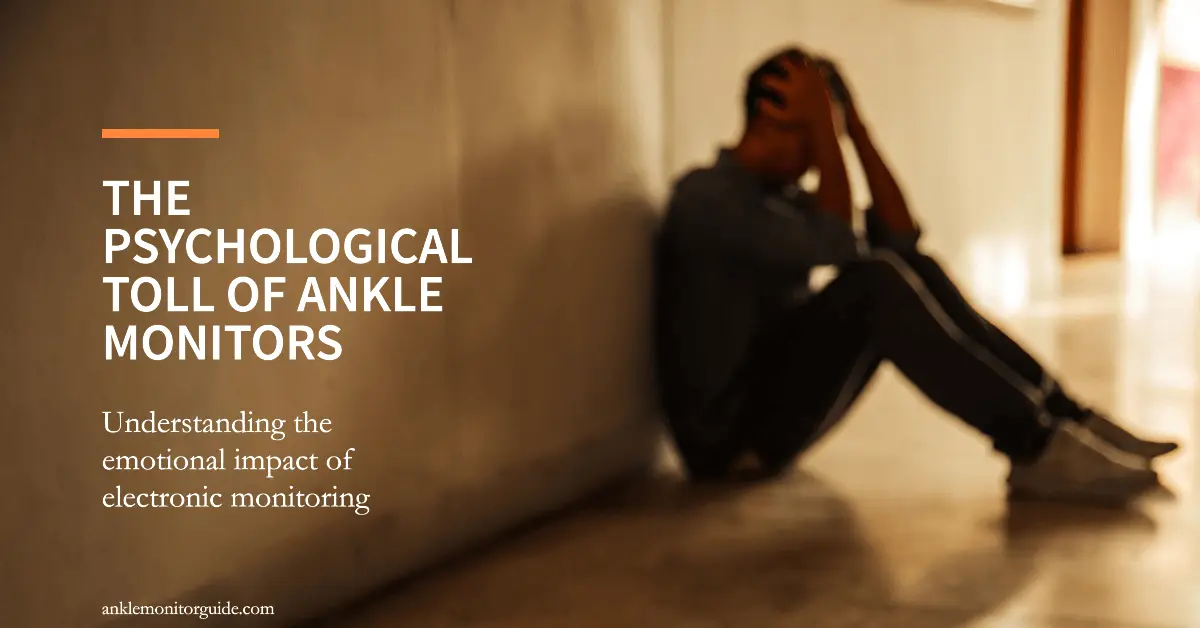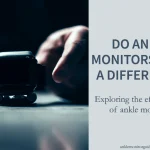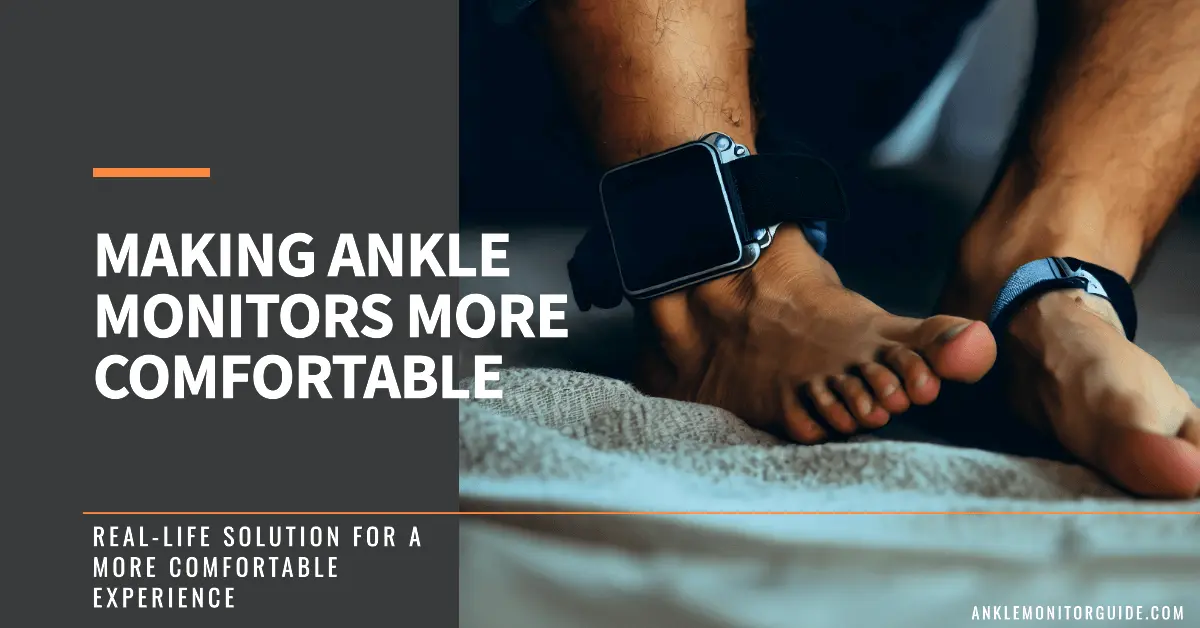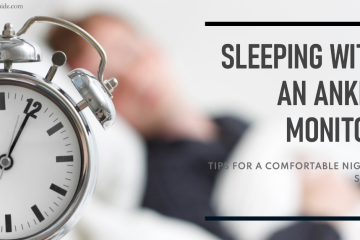Imagine living life with a heavy shackle around your ankle, one that doesn’t just weigh you down physically but bears down on your very soul. For many individuals on probation, parole, or pre-trial release, this isn’t a mere thought experiment; it’s their daily reality.
The innocuous-seeming ankle monitor, a device intended for tracking and surveillance, can leave an indelible mark on one’s psyche. This is why, the ankle monitor’s psychological impact has become a subject of increasing concern and inquiry. This article aims to dissect the varying facets of this issue, understanding the tangible and intangible effects of such devices on the mental health of wearers.
Understanding Ankle Monitoring
Before delving into the psychological impact, it’s important to understand the basic premise and mechanics of ankle monitors. These devices use GPS technology to track the wearer’s location, ensuring they comply with court-mandated restrictions. They’re often used as an alternative to incarceration, allowing individuals to serve sentences or await trial at home.
The Psychological Toll: Anxiety, Depression, and Beyond
Research has been exploring the question: “Do ankle monitors affect mental health?”. The answer, while complex, seems to lean towards the affirmative. Ankle monitors are found to have profound effects on mental health, resulting in heightened stress, anxiety, and depression among wearers.
- Constant Surveillance: Imagine knowing that every step you take, every place you visit, is being scrutinized. This constant surveillance is a psychological burden that can induce anxiety levels that are off the charts.
- Loss of Privacy: Ankle monitors strip away a layer of personal privacy. The knowledge that your every move is being tracked can lead to feelings of intrusion and anxiety about your personal space.
- Social Stigma: Wearing an ankle monitor can subject individuals to social stigma and judgment. The fear of being ostracized or labeled as a ‘criminal’ can result in isolation and plummeting self-esteem.
- Restrictions and Isolation: Ankle monitors often come with stringent curfews and restricted mobility. These limitations can lead to social isolation, further exacerbating the psychological toll.
a) Anxiety and Ankle Monitors
A study found that electronic monitoring can induce constant anxiety. This is due to constant surveillance and the fear of unintentional non-compliance, such as technical glitches mistaken for a violation.
b) Depression and Electronic Monitoring
The question, “Do ankle monitors cause depression?”, has been explored in numerous studies. The constant reminder of legal troubles and the restrictive nature of the device can lead to feelings of hopelessness and depression.
c) Social Isolation and Electronic Monitoring
The social isolation and electronic monitoring often go hand-in-hand. The stigma attached to wearing such a device can cause people to withdraw from social situations, leading to isolation, according to experts.
Real-Life Experiences Echo Research Findings
Data is further substantiated by the lived experiences of people who have worn ankle monitors. The constant stress from ankle monitoring is a recurring theme in many personal narratives. Feelings of being trapped, controlled, and stigmatized are commonly reported.
To bring these effects to life, let’s hear from real individuals who’ve walked in these shoes:
- Jane’s Struggle: Jane, a young woman on probation, described her experience as “emotionally draining.” She often found herself doubting every decision, constantly fearing that a misstep could have severe consequences.
- Adam’s Journey: Adam, a parolee, shared his ongoing battle with depression while wearing an ankle monitor. He frequently felt like an outcast, struggling with social isolation as friends and family distanced themselves.
Furthermore, one individual described the experience as “a prison without walls,” highlighting the invisible but palpable constraints. Another reported significant self-esteem issues, encapsulating the self-esteem and ankle monitor wearers dilemma.
Coping and Rehabilitation
The impact of electronic monitoring on rehabilitation efforts is a contentious issue. While some argue that it enables individuals to maintain family and work relationships, others point out that the psychological distress from GPS ankle monitors can be counterproductive to rehabilitation efforts.
The stigma associated with wearing the monitor, coupled with the anxiety of constant surveillance, can hinder the wearer’s ability to reintegrate into society and lead a normal life post-sentence.
a) Rehabilitation and Psychological Effects
While the psychological effects of ankle monitors are profound, some individuals find ways to cope and rehabilitate themselves. Therapeutic interventions, such as counseling and support groups, play a pivotal role in helping individuals manage the psychological impact of ankle monitoring. These programs focus on building coping mechanisms and addressing the emotional toll associated with surveillance.
b) Building Self-Esteem
Working on self-esteem is crucial for those wearing ankle monitors. Encouraging individuals to engage in activities that boost their confidence and self-worth can mitigate the negative effects.
c) Supportive Community
Creating a supportive community for individuals subjected to electronic monitoring can help combat feelings of isolation. Building connections with others who share similar experiences can be invaluable in the journey to recovery.
Conclusion:
While ankle monitors serve a purpose in the justice system, it’s crucial to consider the psychological implications. Stigma and ankle monitor usage, loss of privacy, and social isolation are all potential consequences that can affect a person’s mental health and rehabilitation process, leading to increased stress, anxiety, and depression.
As we continue to leverage technology in law enforcement, it’s imperative to keep the human element in focus. The psychological effects of ankle monitoring are real and significant. A more compassionate approach, coupled with continued research and policy reform, can help balance the scales between public safety and individual mental well-being. It’s a reminder that behind each bracelet is a complex human experience, one that deserves understanding and empathy.







